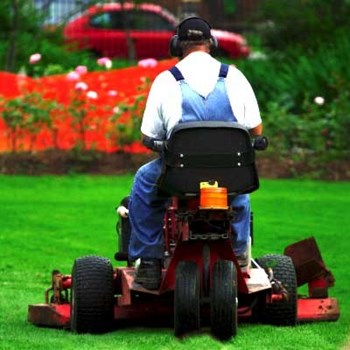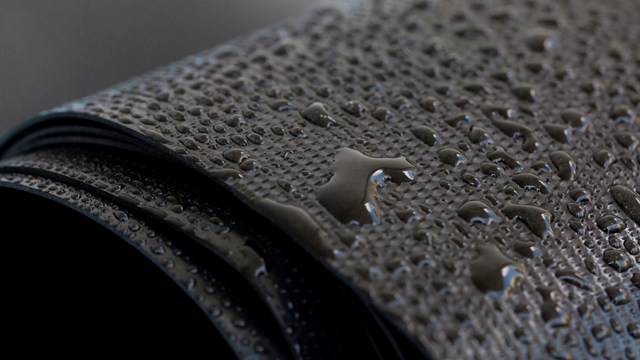
After the winter snow has thawed and the warmer spring weather is starting to show, the attention of property managers and homeowners turns to one common task—to create a healthy, attractive lawn. It's a major concern, but it can sometimes be a major headache as well, especially when preventing weeds, diminishing brown patches and the debate over whether or not to use pesticides are just some of the regular issues that need to be addressed annually.
So we went straight to the experts—veteran landscapers who can tell us exactly what they consider the top 10 questions that property managers or building staff should ask about their lawn and lawn care. These experts provided informative answers and the end result is a great how-to guide that provides a terrific start to a beautiful, lush lawn for every association.
1. What are the most important elements involved in maintaining healthy turf?
"Dark vibrant green turf is the anchor for any landscape," says Rob Kopf, manager of the Turf & Ornamental Division at Dubrow's Nurseries Inc. in Livingston, "It's what first catches a persons eye, and makes that all important first impression. The basic requirements for a healthy turf are water, air, sunlight and nutrients."
2. How much of each element is important when creating a healthy lawn?
"Avoiding too much of a good thing is the rule here, and since the amount of sunlight can't be controlled, water, air and nutrients should be the areas of main concern," says Kopf. "Automatic irrigation should be run in the pre-dawn hours—not in the evening—to provide the water needed, but not allow the turf to be water soaked for the entire nighttime period which encourages disease development. Deep watering, or extended irrigation cycles, done two to three times per week will provide enough water to keep turf healthy, and will cause the grass plants to develop deeper root systems, and result in a more drought tolerant lawn."
Kopf also explains that visible symptoms of over-watering include puddles of standing water, or turf and underlying soil staying saturated for long periods of time.
"This condition can cause an anaerobic situation as the water fills the spaces in the soil and replaces the air needed for proper root function," he explains. "Normal mowing cycles and pedestrian traffic will also contribute to this situation by further compacting the soil.Over-watering andcompaction work together to form a disease-friendly environment, but this can be overcome with regular yearly mechanical aerations. Turf grows in an artificially created environment, and regular applications of balanced fertilizer are needed to maintain good color and health."
To determine how much fertilizer is needed, Kopf explains that the basic nutrient elements of all turf fertilizers are nitrogen, phosphorus, and potassium (NPK).
"The cool season grasses in the New Jersey and New York area require an average of 4.0 to 4.5 pounds of nitrogen per 1,000 square feet," he explains. "This is best applied in four applications with the heaviest application being made in the late fall. Properly fertilized turf will be more resistant to seasonal stresses."
3. Are there any grasses that are drought-tolerant and will stay green when the weather is hot and the turf isn't irrigated?
According to H. Bruce Hellerick, senior horticulture specialist at The Brickman Group in Langhorne, Pa., tall fescue would meet these requirements. Tall fescue is a coarse, clump-forming turf grass that tolerates low fertility, heavy wear, heat and drought. "In addition, tall fescue is fairly insect and disease resistant," he explains. "The only drawback is that tall fescue is a 'bunch-type' grass, which means it does not spread like Kentucky bluegrass, and the turf area should be over-seeded each fall to assure the maximum density and thickness of the turf."
4. What is the best way to achieve 'weed free' turf?
"The best way to stop weeds is to have a strong defense, which means having a good, thick turf," says Hellerick. "The ways to achieve this are through good cultural practices like soil testing, core aeration, top dressing with organic compost, over seeding, fertilization as needed, irrigation if and when needed and proper mowing practices."
5. What are the best alternatives to turf in areas that grasses can't be established?
Hellerick says that Mother Nature is there to help you in this process. "Work with nature and accept the fact that sometimes turf will not always grow where you want it to," he says. "Like under large shade trees with shallow roots, very wet areas, very rocky or dry area and very steep slopes (it's a safety issue) and accept these cold hard facts."
Instead, he suggests that you look at the surrounding area and identify plants that are readily growing and incorporate them into the landscape. "Sometimes these problems can be solved by radically altering the soil conditions or environment—meaning that you'll be spending lots of money—but even after this you may still be disappointed."
6. What should I know about pesticide treatments and how they're applied?
"Though the pesticides in use today are more target-specific and have less of an impact on the environment than those used five or tenyears ago, care must be taken in their selection and use," says Kopf.
These experts agree that blanket treatments of pesticides are no longer the norm and are being replaced by integrated pest management programs (IPM). "IPM programs are more tenant-friendly, because they reduce the amount of pesticides in the environment by calling for application of pesticides only when levels of insects or disease exceed established thresholds," he says. "A typical lawn care program for a commercial site includes two applications of broadleaf weed control, pre emergent crabgrass control, surface insect control (IPM), and preventative grub control. Disease control on a curative basis is the most economical, but diagnosis and treatment must be done quickly as many pathogens can spread quickly damaging large areas of turf."
7. What licenses should New Jersey landscapers have?
"New Jersey requires anyone applying pesticides commercially to be licensed as a certified pesticide applicator," says Kopf. "It is a good practice to ask contractors to provide copies of their licensed applicators. A Customer Information Notice listing all the pesticides that may be used during the season must be supplied by the contractor each year, and pesticide labels can be provided on request."
8. What should a contract specify?
"Each contract should have a set of specifications so that the contractor and the association fully understand the criteria of the job," says Gary Wilkin, president of Wilkin Management Group in Mahwah. "For example, what day of the week do you want your regular cutting? What about edging of the beds—weekly or monthly basis? What about what should be done once a year? When should trimming and chemical applications take place? A good management company is going to make recommendations and identify those time frames and follow up and make sure those issues are done. For instance, we have a library shared network and all managers, staff members can get a basic set of specs for anything and extrapolate for any site requirement."
9. What should a contract include about payment requirements?
"The contract should mention how the contractor gets paid," says Wilkin. "Is it monthly, or do they work nine months out of the year and get paid over 12 months? In a perfect world, you want to have contract for season in place by November or December of the previous year."
10. Is there anything missing from the typical landscaping maintenance specification that you believe should be added to help ensure healthy turf?
"Each property has different needs," says Hellerick. "Unfortunately, usually the practice that the site needs has not been included in the specification. Work with a landscape contractor who is knowledgeable and can identify the sites needs and make recommendations to improve the site."
With basic knowledge and the partnership with a lawn care professional, your HOA will have great landscape in no time.
Lisa Iannucci is a freelance writer living in Poughkeepsie, New York and a frequent contributor to The New Jersey Cooperator.






Leave a Comment